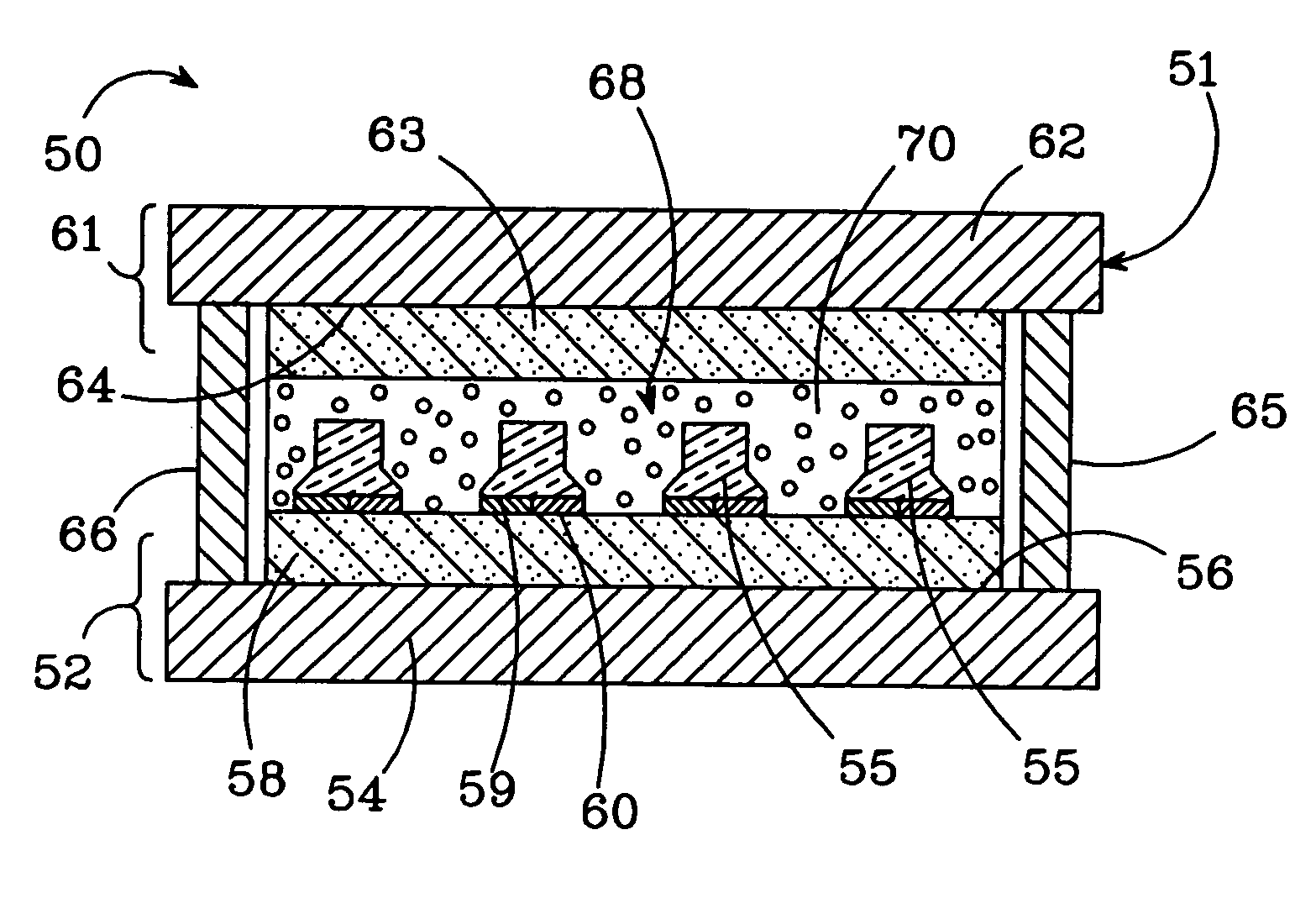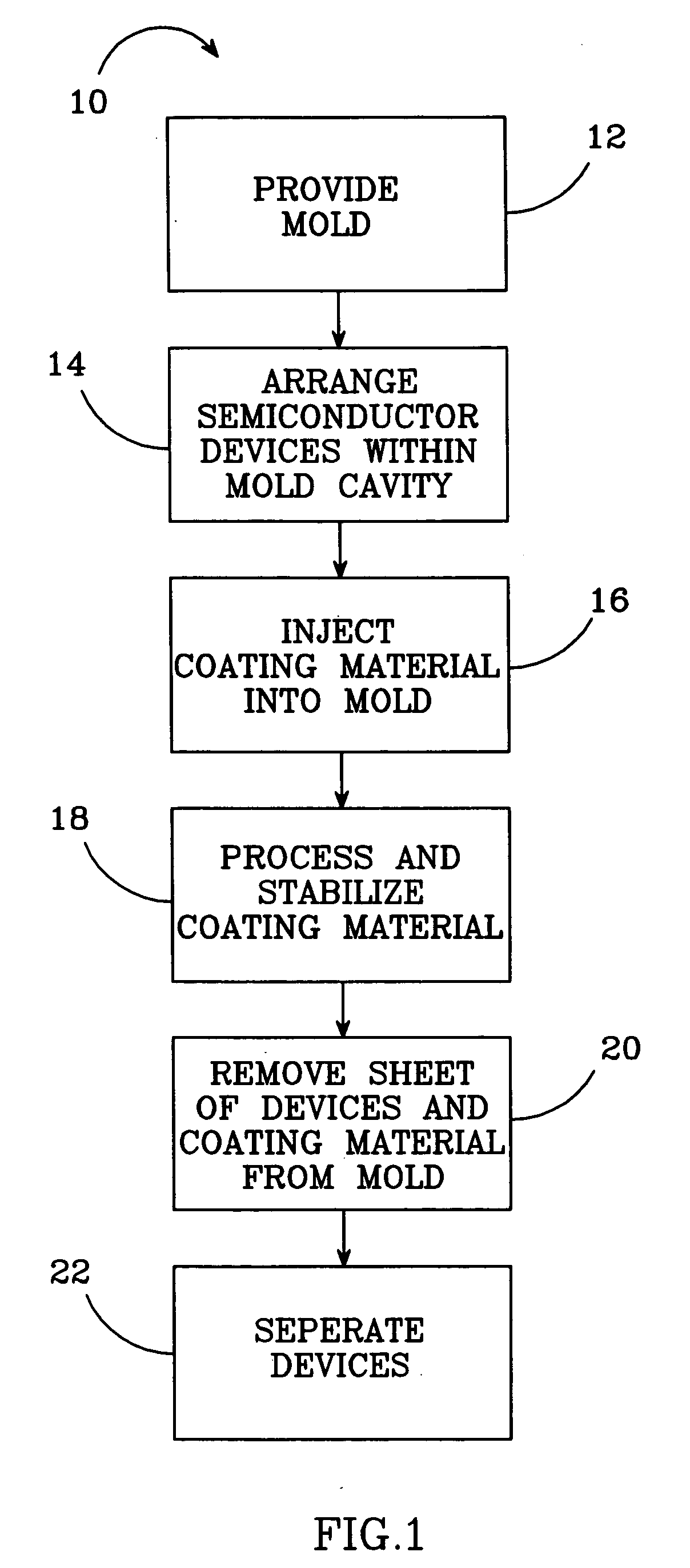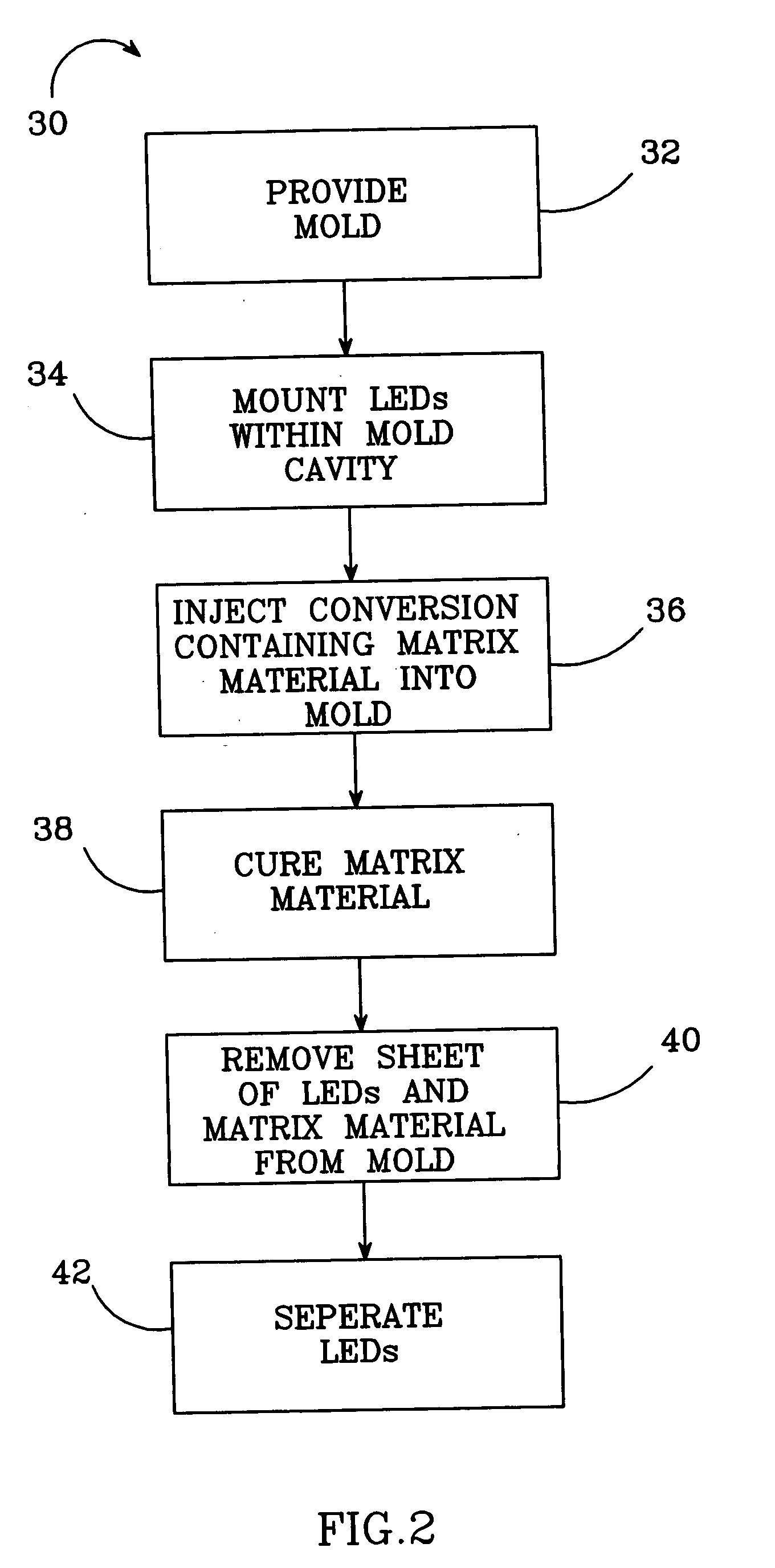Molded chip fabrication method and apparatus
a technology of molded chips and fabrication methods, applied in electrical equipment, semiconductor devices, semiconductor/solid-state device details, etc., can solve the problems of increasing the overall cost and complexity, requiring costly fabrication techniques, and not being able to generate white light from active layers, etc., to achieve simple and easy-to-use effects
- Summary
- Abstract
- Description
- Claims
- Application Information
AI Technical Summary
Benefits of technology
Problems solved by technology
Method used
Image
Examples
Embodiment Construction
Coating Methods
FIG. 1 shows one embodiment of a method 10 for coating semiconductor devices according to the present invention and comprises a first step 12 of providing a mold. A preferred mold comprises a formation cavity that is arranged so that semiconductor devices can be held within it and a coating material can be injected or otherwise introduced into it to cover the devices. The cavity can have many different shapes and is preferably defined by at least upper and lower parallel surfaces. In other embodiments the cavity can be further defined by side surfaces running between the upper and lower surfaces. The different shapes of the formation cavity including, but are not limited to, disk, box or lens shaped. The side surfaces can run around the entire edge of the upper and lower surfaces or can be intermittent.
In step 14, semiconductor devices are arranged within the formation cavity and in the preferred method 10, the devices are precisely arranged in a predetermined pat...
PUM
| Property | Measurement | Unit |
|---|---|---|
| adhesive | aaaaa | aaaaa |
| temperature | aaaaa | aaaaa |
| shape | aaaaa | aaaaa |
Abstract
Description
Claims
Application Information
 Login to View More
Login to View More - R&D
- Intellectual Property
- Life Sciences
- Materials
- Tech Scout
- Unparalleled Data Quality
- Higher Quality Content
- 60% Fewer Hallucinations
Browse by: Latest US Patents, China's latest patents, Technical Efficacy Thesaurus, Application Domain, Technology Topic, Popular Technical Reports.
© 2025 PatSnap. All rights reserved.Legal|Privacy policy|Modern Slavery Act Transparency Statement|Sitemap|About US| Contact US: help@patsnap.com



